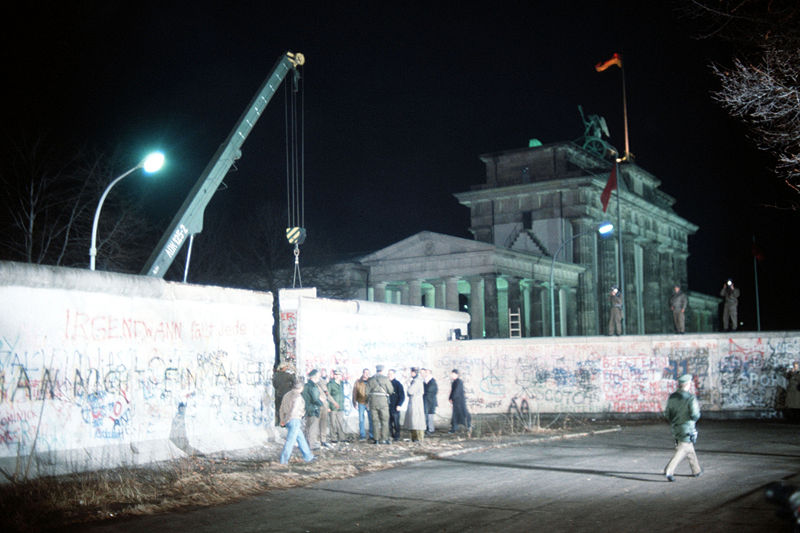History
Timeline of Key Points During the Cold War
THAW 1985- 1991
1985: -- Mikhail Gorbachev ascends to power in Soviet Union. He realised
that the USSR could not compete with the USA. He introduced PERESTROIKA
, which gave businesses more control and GLASNOST, which allowed free
media. It, however was too late, the USSR was in such a poor state big
changes could not occur.
1987: Intermediate Nuclear Forces Treaty - Reagan and Gorbachev agreed
to reduce the number of nuclear weapons and remove all nuclear missiles
from Europe.
1989: End of Brezhnev Doctrine -- Gorbachev told communist leaders the
Soviet army would no longer help them stay in power. This resulted in
Eastern European countries becoming independent from USSR and the Warsaw
pact ended.
1989: Berlin Wall falls

The fall of the Berlin Wall
1990s
1991: August -- Three days that destroyed the USSR -- Conservative communists were unhappy that Gorbachev had led to the collapse of communist control of Eastern Europe. The soviet economy was collapsing and USSR was no longer a Superpower. On August 18 Gorbachev was arrested by the KGB. The ‘Gang of eight’ attempted to seize power but did not arrest Boris Yeltsin. On August 20 Yeltsin was in control. Gorbachev ended the communist party and KGB. By December 21 1991 the USSR ceased to exist and was replaced by CIS. Latvia, Lithuania, Estonia and Belarus did not join. Gorbachev resigned.
Reference Tools
Dictionary
Thesaurus
Maps
Scientific Calculator
Periodic Table
Translator
Unit Conversion
Divided Union
Introduction
Post War
The ‘Red Scare’
Civil Rights Movement
Non-Violent Direct Action
John F Kennedy
Lyndon Johnson
Growth of Black Power
The Woman’s Movement
The Student Movement
Nixon and Watergate
Cold War
Period 1945 - 1962
Period 1956 - 1962
Period 1962-1969
Period 1969 -1979
Period 1979 - 1985
Period 1985- 1991
